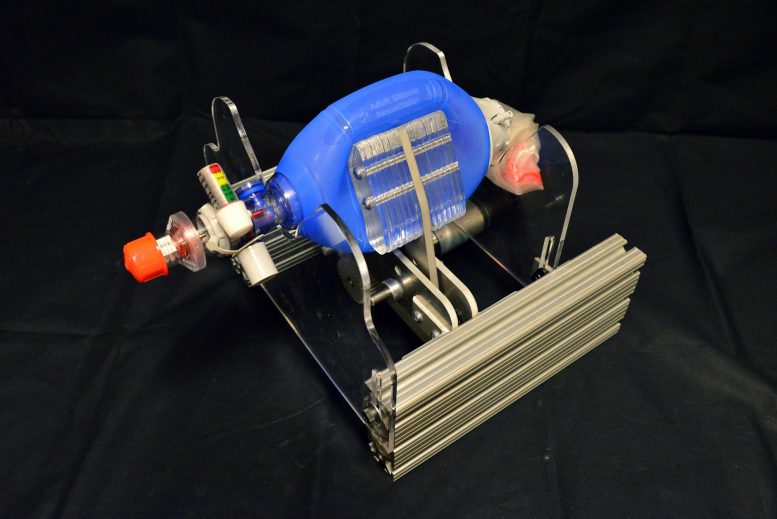
The plan for a new device that can be built for $100 is going to be introduced by MIT which will serve as analternative ventilator to provide breathing support to ventilated patients.
Hospitals are facing shortages of ventilators due to the massive outbreak of COVID-19. MIT has taken the initiative of providing plans for building ventilators to keep patients breathing when they can longer breathe on their own. Each of the machines costs $30,000. A team of hardworking engineers, computer scientists, physicians, and others have come up together to implement a secure and inexpensive alternative for emergency use.
Image Source: e-vent.mit.edu
The team, named MIT E-Vent (Stands for emergency ventilator), has been formed on March 12, 2020, to make a commitment to stop the fatal consequences of COVID-19 pandemic to some extent. The most interesting thing about this simple and inexpensive alternative of ventilator is that a hand-operated plastic pouch called Ambu bag or a bag-valve resuscitator would be utilized. These are available to all the hospitals in a large amount and the alternative ventilators are designed to be operated by hand by emergency technicians or medical professionals to provide breathing support to patients. A tube will be inserted into a patient's airway as done in case of a hospital ventilator whereas the task of air pumping into the lungs will be done by squeezing and releasing the flexible pouch.
The initiative of MIT aims to provide mechanical support to do the squeezing and releasing of the Ambu bag since it is not possible to be done by skilled and trained personnel to do it for a longer time. At the same time, it is difficult for a system to continue its work without damaging the bag. The mechanical support system may not be equally controllable as a human hand to deliver the exact amount of air and pressure needed for a particular patient.
Image Source: e-vent.mit.edu
Therefore, MIT's effort tends to offer a plan for a reliable device as the unexpected failure of such a vital device may cause the patient's death. The device will have mechanical paddles driven by a small motor to direct the air through the tube placed in the patient's airway. As per the design provided by MIT the bag can immediately be operated manually. Related information is available on the page MIT E-Vent.
Image Source: e-vent.mit.edu
The team has reported that around 1 million cycles are required to support a patient over a period of two-weeks and fault-tolerant code is also needed for the successful operation of this device. The all-volunteer team is carrying on their work without funding as well as operating anonymously as many of them have to face several queries to reveal more information. Although the work has become tiresome, the enthusiasm of the team members has not been hampered.